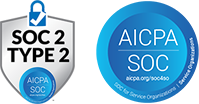What Is Employee Value Proposition?
An Employee Value Proposition (EVP) is the promise an organization makes to its people in exchange for their skills, performance, and engagement. It comprises tangible and intangible elements—such as pay and benefits, career opportunities, culture and leadership, work environment, and purpose—that together define why someone would join, stay, and give their best at a company. A compelling EVP communicates the organization’s commitment and differentiates it in competitive talent markets.
Why Employee Value Proposition Matters
In today’s tight labor market, a clear, authentic EVP is critical to attract top talent, reduce recruitment costs, and boost retention. When employees see that the organization delivers on its promises—through meaningful work, development paths, and supportive leadership—they engage more deeply, perform at higher levels, and advocate for the employer brand. Embedding EVP metrics into People Analytics dashboards enables HR to track promise–delivery gaps and iterate offerings based on real-time feedback.
Where Employee Value Proposition Is Used
EVP guides strategic HR and talent processes across:
- Employer Branding: Shapes careers sites, recruitment marketing, and social-media content to reflect authentic employee experiences.
- Onboarding & Orientation: Frames new-hire welcome programs around core EVP pillars to reinforce organizational promise from day one.
- Talent Acquisition: Links job descriptions and sourcing messages to EVP themes—ensuring consistency in candidate experience.
- Performance & Development: Aligns learning pathways and recognition programs with EVP commitments around growth and purpose.
- Retention & Alumni Engagement: Monitors departure reasons against EVP pillars, then refines programs to shore up weak areas and maintain long-term advocacy.
Employee Value Proposition Key Benefits
- Stronger Recruitment: EVP-driven messaging increases applicant quality and reduces time-to-fill by up to 30%.
- Higher Retention: Organizations with aligned EVPs see turnover drop by 15–20%, preserving institutional knowledge and cutting hiring costs.
- Enhanced Engagement: Clear alignment between EVP promises and daily experience lifts engagement scores, driving productivity gains.
- Competitive Differentiation: A distinctive EVP stands out in crowded talent markets, attracting passive candidates.
- Data-Driven Improvement: People Analytics capture EVP sentiment across cohorts—guiding dynamic adjustments to offerings and communications.
Best Practices & Examples
- Five Pillars of EVP:
- Compensation & Benefits: Competitive salary, health plans, retirement programs, and wellness perks.
- Career & Development: Learning budgets, mentorship, stretch assignments, and clear promotion paths.
- Culture & Purpose: Inclusive environment, leadership authenticity, and alignment with mission and values.
- Work Environment: Flexible schedules, hybrid work models, and ergonomic tools that support well-being.
- Recognition & Rewards: Formal and informal mechanisms—peer-to-peer programs, spot bonuses, and milestone celebrations.
- EVP Strategy: Conduct quantitative surveys and qualitative focus groups to identify the most valued pillars, then co-create initiatives with employee ambassadors. Integrate EVP metrics into HR dashboards and set quarterly targets for improvement.
- Example of a Value Proposition: A technology company positioned its EVP around “Innovate. Grow. Belong.”—offering hackathon opportunities (Innovate), personalized development stipends (Grow), and open ERG networks (Belong). Within six months, candidate NPS rose by 25% and voluntary turnover fell by 12%.
Conclusion
An effective Employee Value Proposition aligns organizational promise with the real experiences and aspirations of employees. By defining clear pillars, integrating them into every talent process, and continuously measuring delivery through People Analytics, organizations build a magnetic employer brand, foster deep engagement, and secure the talent needed for sustained success.
Employee Value Proposition FAQs
Q: What are the 5 pillars of EVP?
The five pillars are Compensation & Benefits, Career & Development, Culture & Purpose, Work Environment, and Recognition & Rewards—each representing core facets of the employee experience that drive attraction and retention.
Q: What is the EVP strategy?
An EVP strategy involves researching employee priorities, defining key pillars, building aligned programs (e.g., learning budgets or flexible work), and embedding continuous measurement into People Analytics to iterate and optimize offerings.
Q: What is an example of a value proposition?
A retail brand’s EVP—“Shop with Pride”—offered employees a 25% merchandise discount (Benefit), career-track certifications (Development), and quarterly culture days celebrating frontline heroes—resulting in a 20% boost in engagement scores.




